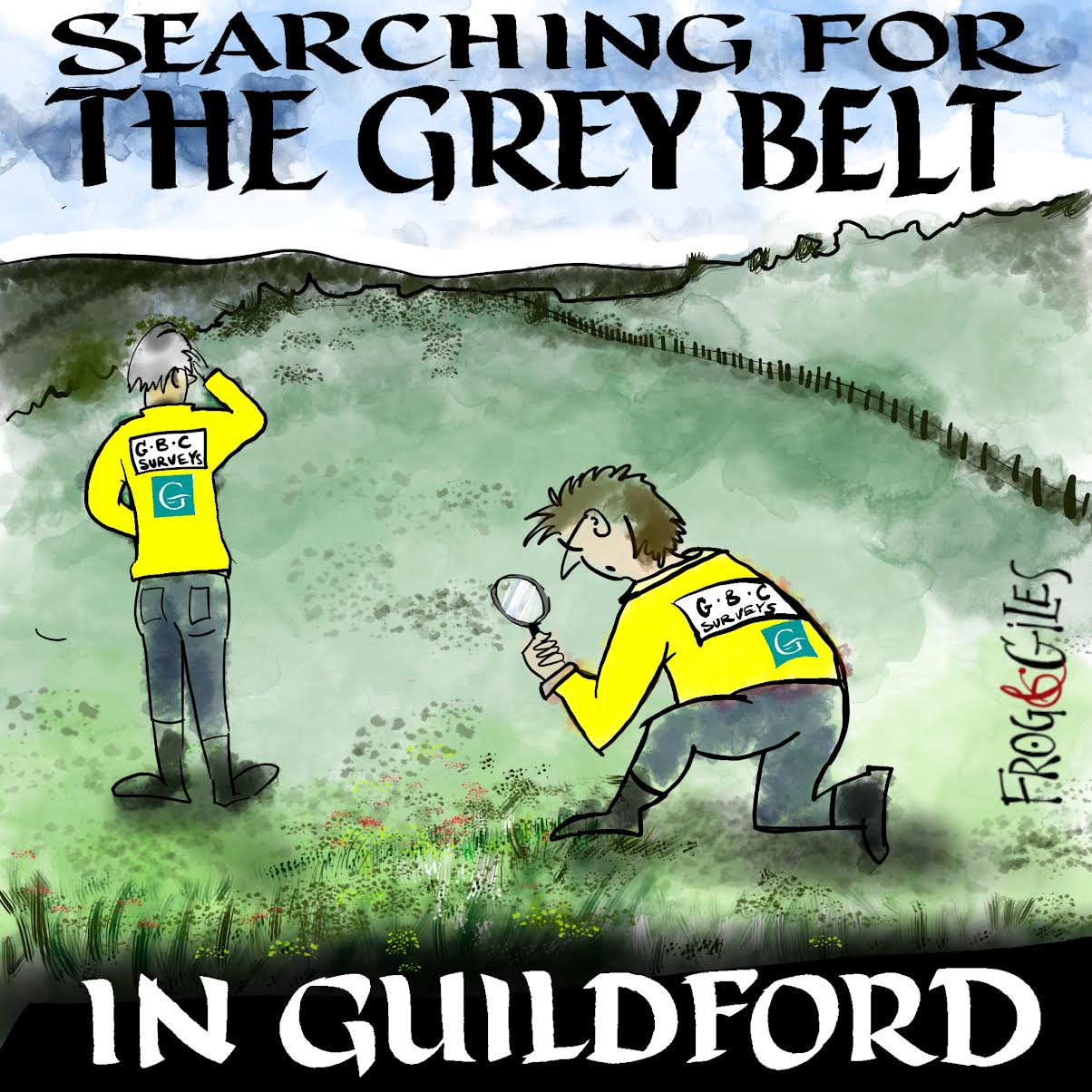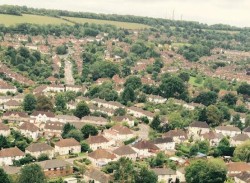 Abraham Lincoln
If given the truth, the people can be depended upon to meet any national crisis...
Abraham Lincoln
If given the truth, the people can be depended upon to meet any national crisis...
 Guildford news...
for Guildford people, brought to you by Guildford reporters - Guildford's own news service
Guildford news...
for Guildford people, brought to you by Guildford reporters - Guildford's own news service
Letter: The Real Crisis Is Of Housing Affordability
Published on: 9 Aug, 2016
Updated on: 9 Aug, 2016
Gordon Bridger has so much wrong in his letter Green Belt Will Be Needed For Housing that I barely know where to start.
He joins a national chorus, voicing the opinion that there is a housing crisis because the supply of new housing does not match demand. But numbers do not bear this out; by and large, housing supply has kept pace with the increase in population, both locally and nationally.
There is a housing affordability crisis, of that there is no question, but this is quite a different issue. The affordability crisis has arisen through a perfect storm created by poor economic policy choices of successive governments – and the coincidence of many factors.
Wages have barely kept pace with inflation, and the government relies solely on the private sector to supply houses. Thus the housing market illustrates what an uncontrolled reliance on the private sector brings – inflated profits for developers.
If Mr Bridger had taken my advice given in response to one of his previous letters – to look at the profit and loss accounts of a developer, he would have learned that his belief that high house prices were because of high land prices was incorrect, but sadly he has not, so he repeats his error.
Affordability will not be improved by building more houses in Guildford – there is an almost infinite demand from those wishing to move to the South East in search of work or a pleasant place to live. Guildford is not an island, remote from the rest of the region.
More houses simply mean more people, but only minimal impact on affordability, and there is a cost. More people and housing mean increased infrastructure problems, more traffic, and greater air pollution – more of everything that will make the borough a much less pleasant place to live.
The problem of affordability is a national problem, largely created by national governments – and so the solution has to be a national one. Theresa May’s government needs real industrial and regional policies to slow the population movement to the South East.
They also need a proper examination of the cause of the housing affordability crisis, so that causes can be addressed. And more than anything else, her government needs to fund more social housing, but not by using large developer companies, but by using small, local builders, with a guaranteed stream of work for a minimum of five years to supply social housing, as well as housing that can be purchased via shared ownership and similar schemes.
Mr Bridger should also bear in mind the results of a recent opinion poll for the Guardian newspaper. In the poll, said to be representative of the UK as a whole, only 9% of those polled thought that the housing crisis should be solved by building additional housing in the green belt. In other words, a large majority of the nation recognises that the green belt is a national asset, and as such it should be treasured and protected.
This is not incompatible with building more social housing locally, though it is incompatible with over development, which is the cancer eating at the beauty of our countryside. Like all cancers, it will kill, unless it is stopped. But the Local Plan proposes to feed this cancer, not to stop it. Which is why I, with many others, am opposed to it.
Responses to Letter: The Real Crisis Is Of Housing Affordability
Leave a Comment Cancel replyPlease see our comments policy. All comments are moderated and may take time to appear. Full names, or at least initial and surname, must be given.

"Found any?" - "Nope, it all looks green to me!" (See Opinion: The Future is Congested, the Future is Grey)




Recent Articles
- Sara Sharif Trial Latest – Defence Says Sara’s Uncle ‘Facing Murder Count on Absolutely Nothing’
- Ash Level Crossing Row: GBC Rejects Cabinet Member’s Statement As ‘Factually Incorrect’
- Letter: What Will Be Done for Burpham Residents Now?
- County Council Cabinet Confirms Its Decision on London Road Scheme
- Postcode Lottery Police Funding – It ‘Cannot Be Fair’ Says Police Commissioner
- Heartbreak for City Again as Two Extra-time Goals Snatch Victory
- Letter: All Three Major National Parties Are Relaxed About Green Belt Giveaways
- Updated: Ash Level Crossing Decision ‘Was Made Without Approval of Surrey Highways’
- Dragon Interview: Julia McShane leader of GBC’s Lib Dems
- Letter: Ash Bridge – We Need Accountability and Competence


Recent Comments
- Brian Holt on Heartbreak for City Again as Two Extra-time Goals Snatch Victory
- Helen Skinner on County Council Cabinet Confirms Its Decision on London Road Scheme
- John Oliver on County Council Cabinet Confirms Its Decision on London Road Scheme
- John Ferns on Ash Level Crossing Row: GBC Rejects Cabinet Member’s Statement As ‘Factually Incorrect’
- Jim Allen on County Council Cabinet Confirms Its Decision on London Road Scheme
- Olly Azad on Heartbreak for City Again as Two Extra-time Goals Snatch Victory
Search in Site
Media Gallery
Dragon Interview: Local Artist Leaves Her Mark At One of England’s Most Historic Buildings
January 21, 2023 / No Comment / Read MoreDragon Interview: Lib Dem Planning Chair: ‘Current Policy Doesn’t Work for Local People’
January 19, 2023 / No Comment / Read MoreA3 Tunnel in Guildford ‘Necessary’ for New Homes, Says Guildford’s MP
January 10, 2023 / No Comment / Read More‘Madness’ for London Road Scheme to Go Ahead Against ‘Huge Opposition’, Says SCC Leader
January 6, 2023 / No Comment / Read MoreCouncillor’s Son Starts Campaign for More Consultation on North Street Plan
December 30, 2022 / No Comment / Read MoreCounty Council Climbs Down Over London Road Works – Further ‘Engagement’ Period Announced
December 14, 2022 / No Comment / Read MoreDragon Interview: GBC Reaction to the Government’s Expected Decision to Relax Housing Targets
December 7, 2022 / No Comment / Read MoreHow Can Our Town Centre Businesses Recover? Watch the Shop Front Debate
May 18, 2020 / No Comment / Read More







Adrian Atkinson
August 9, 2016 at 9:38 pm
Affordability is not going to be improved by 0.25% interest rates and massive new levels quantaitive easing meaning that money is “cheap” vs appreciation of assets. Prices, in these circumstances, are not driven by demand being greater than supply. They are being driven by peoples’ ability to pay more than before. A record low interest rates and cheap money for buy to let and foreign buyers means that at the other end demand is still strong.
I think we are in an unique situation where money is cheap, the South East is overheating and as a result house price are very high thus providing great returns for foreign and UK asset managers.
House building as planned is not going to change affordability.
Sue Fox
August 10, 2016 at 12:11 pm
Housing prices in Guildford and the South East are beyond the average wage earner and certainly beyond the people who move here from anywhere north of Watford. What is a disgrace is the number of foreign investors especially in London who buy “luxury accommodation” and then leave it unoccupied.
Nobody but developers, investors and landlords benefit, certainly not those of us who are sitting in houses we bought in our thirties.
Building on the green belt would mean more seven figure houses being built, not affordable housing for people, and destruction of the pleasant land we currently enjoy.
We should be supporting an diverse economy which means good jobs north of Watford. As someone who has watched every post Brexit programme it is evident that people want to live and work where they feel comfortable, not forced into penury to find an appropriate job.
Jules Cranwell
August 10, 2016 at 7:17 pm
British Columbia has recently imposed a 15% tax on “buy-to-leave” foreign investments, as a response to an increasing impact from this phenomenon. This follows similar moves in Australia and Hong Kong.
Why can’t the UK government wake up and do something similar, and why is our council not lobbying for this?
This may have started as a London issue, but it is now very much impacting on Surrey and throughout the South East.
David Smith
August 10, 2016 at 12:37 pm
Currently developers have to provide affordable houses in all developments of more than 14 units. But almost all schemes built in Guildford appear to be 14 units or less which means that no affordable homes are being provided. In the town it is unlikely any schemes for houses will go over 14 units as there simply are not sites large enough.
This means that if we ever want to build affordable homes (and I am talking about affordable rent and shared ownership) these have to be provided on the green belt. That is unless people think flats provide suitable accommodation for families with children.
Harry Eve
August 10, 2016 at 1:19 pm
So why not change the rules for developments of less than 15 units? And at the same time change the rules so that “affordable” means genuinely affordable. If it requires a change of policy at government level, that should not be an obstacle for a government that claims to value the green belt.
Peta Malthouse
August 13, 2016 at 12:33 pm
I am afraid that it is government policy, in a number of aspects, that needs to change now. Typical first time buyers are a professional couple or a single person seeking to settle 2-3 years before they start their family.
Consider those on annual contracts, no hours contracts etc. they cannot get a mortgage. Consider those who have gone to university leaving with £40K debt. How can they buy?
So where is the demand for new homes to purchase? From those of us who wish to invest our pension funds in the knowledge that we will get at least some return? Roland Mckinney is right. The builders have enough planning permissions to get going with their proposed builds but they don’t want to. Instead they want to maximise their profits by building 4/5 bed homes rather than the needed 1-2 bed homes required by the over 50s and 60s as well as young people.
Sadly the best education in the land wasn’t good enough to make this plain to Cameron and Osbourne. Can we hope for better from May and Hammond?